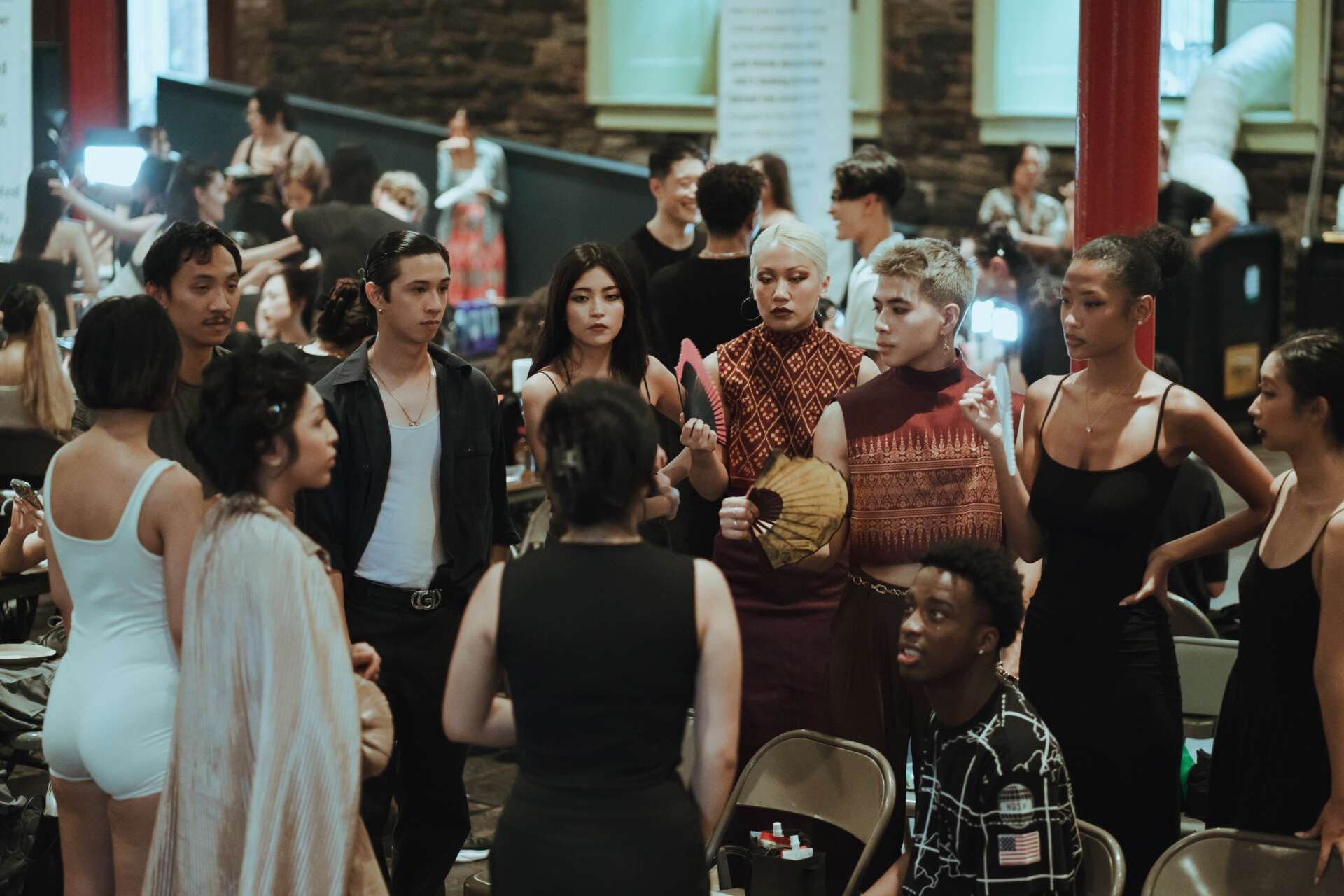We recently connected with Cindy Leewood and have shared our conversation below.
Cindy, appreciate you joining us today. Did you always know you wanted to pursue a creative or artistic career? When did you first know?
A lot of people ask me how I started when they see the work that I do. Each creative is unique in their own specialty and this is my version of my story as a creative.
It started as a desire to have more freedom over what I wore. Growing up in Cambodia I had plenty of opportunities to wear traditional clothes. As a child, traditional clothes were uncomfortable and restricting. I wasn’t too keen on wearing my Khmer heritage. It is interesting for me to say that now, particularly because representing Khmer heritage is what my brand is about.
When I moved to the United States for high school I realized how important being in touch with my culture was. Seeing and wearing Khmer fabric made me feel closer to home. As uncomfortable and restricting traditional clothes are, it didn’t make sense to me why I had to stick to the norm. I could create something comfortable but with Khmer fabric. I was a little worried with how well it would be received but my family assured me that they too had the same thought. They just didn’t understand how to bring my idea to fruition. And so I thought to myself, if I can’t find someone to do it for me, I’ll do it myself. Khmer fabric with modern and sleek formal wear.
The idea didn’t come to me like a light bulb. I was still confused in high school and college. It wasn’t until senior year of college that I fully realized I could pursue this path professionally. My senior project was to create modern formal wear for Cambodian-American women with Khmer fabric. The result of my project was an overwhelming demand to continue creating. I realized that there was a demand, an audience, and niche I was capturing.


Cindy, before we move on to more of these sorts of questions, can you take some time to bring our readers up to speed on you and what you do?
I am a Cambodian-American Designer with emphasis on incorporating Khmer culture into the pieces that I produce. My goal is uplift the Cambodian community and showcase Khmer excellence.
Traditional Khmer clothing is my inspiration. It’s beautiful but it’s losing its place in modern culture. My design process is to directly work with Khmer weavers to source my fabrics. Khmer fabric is the essence of traditional Khmer clothing with its unique designs and weaving techniques. I design around how to best highlight these fabrics while appealing to my audience. With a touch of western influence in style, my design offers a sleek, modern, and truly innovative spin on embracing Khmer culture.
Change is hard, and it’s always a little ambiguous, because there’s no blueprint on how to do it right. Being able to make my culture accessible, helps support the communities and people who make Khmer traditional fabric. Fashion lets stories stay alive and continue to create a demand for those stories. I want people to ask questions “How is this fabric made? Why is it made? Where is it made ?” I want people to see and learn that this is what Khmer culture is and can evolve to be.
Artwork can only truly be appreciated in the right environment. As such, the value of Khmer fabric can only be determined by an educated audience with access to familiarize oneself with its beauty. And so I find it important to continue doing the work that I do because it ensures Khmer culture will continue to thrive.


Can you share a story from your journey that illustrates your resilience?
Seeing the price tag of fast fashion brands can be very discouraging as a small designer. When I see a blazer sold for $25, I feel guilty towards the price I place on my own creations. Sometimes it becomes a vicious cycle of asking myself two questions:
Am I doing my audience justice? – placing prices that my audience can access. If I lower my price, people will be more likely to buy. Fast fashion sells because their prices are so low and their fashion trends offer a wide variety. But do I have the machines, resources, fabrics, and laborers that they have?
Am I doing myself justice? – paying myself a livable wage to continue doing the work. I am one person doing all the work, sourcing, drafting, and sewing the garment. is it morally right for me to deduct the cost of fabric and look for cheaper and not exactly authentic fabric to sell under my brand? Is it right for me to sell misinformation, or underpay weavers for their work?
I am grateful towards my peers and mentor for pulling me out of the cycle. Their advice, “You know the value of your work, the right audience will know it too”. And in girl words “if they wanted to, they would.” Moral of the story, know your brand well and understand the differences between a small brand vs a fast fashion brand.


How can we best help foster a strong, supportive environment for artists and creatives?
in the age of social media, it is so important for society to understand their influence. In my perspective, being educated on your social media platform and what actions encourage the algorithm is very helpful. if you support an artist or creative, pushing them up on the algorithm is the same as giving them more opportunities to thrive. if you support an artist or creative, share them, comment on their post, like their post, watch their content, and etc. These actions prioritize their content and offers them more exposure on social media.


Contact Info:
- Website: https://www.cindyleewoodofficial.com
- Instagram: cindyleewoodofficial
Image Credits
Photographers: There IG @Vivthecreative @michellelee.photography


